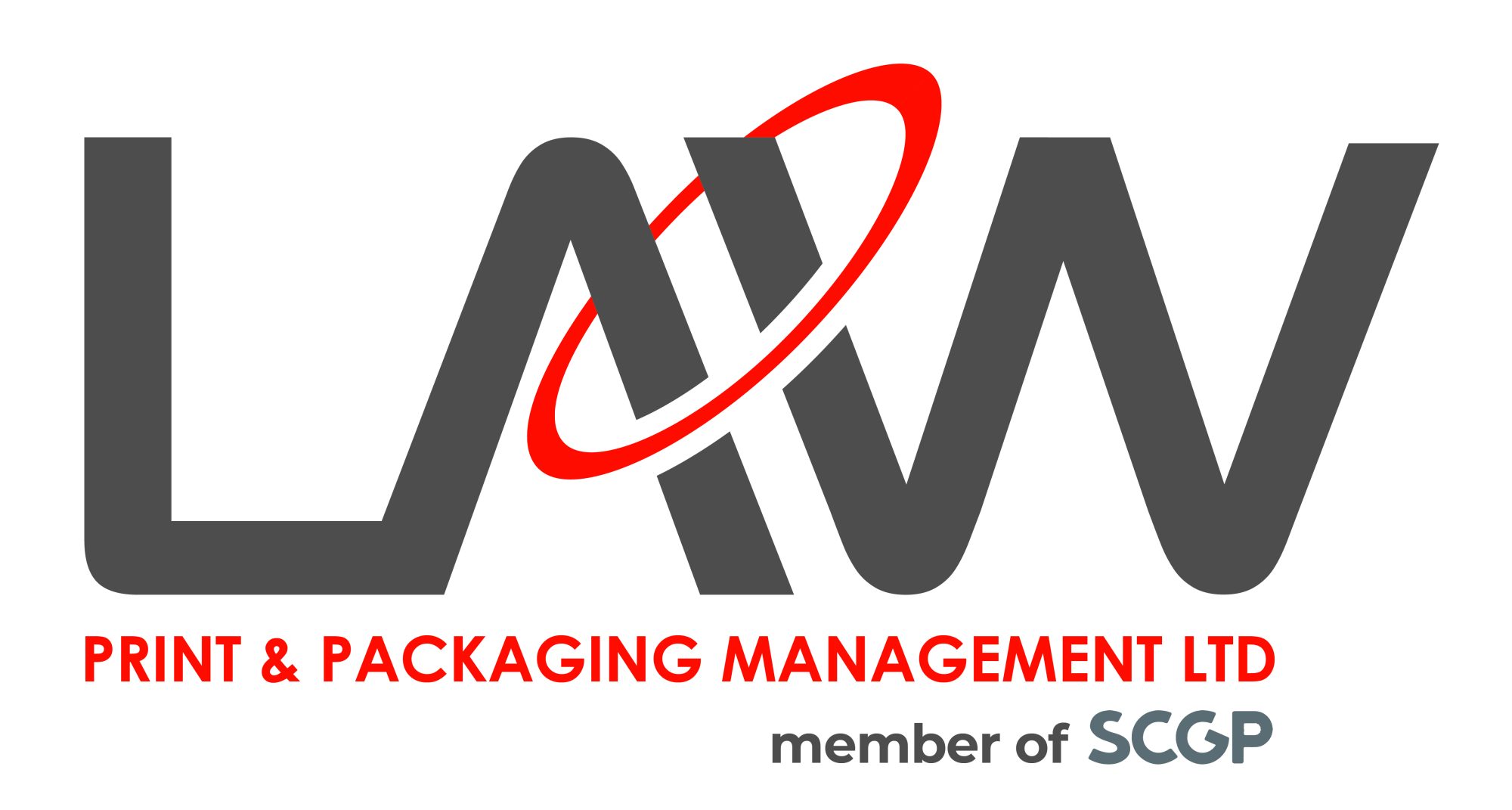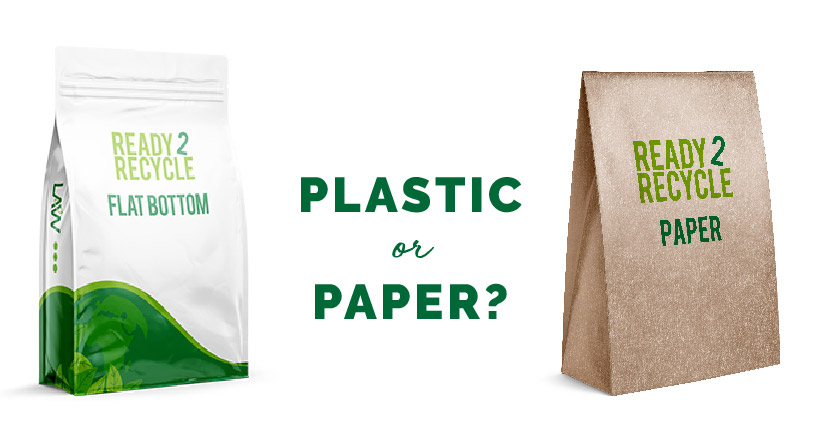As a responsible flexible packaging supplier, Law Print has a duty to understand the environmental impact of different materials utilised in the packaging solutions that we offer, but also educate our customers on the best way to help to achieve their sustainability goals.
As more and more environmental and impact studies come to light, it is becoming clear that paper is not the only or obvious sustainable solution. There are many pros and cons for paper packaging as there are pros and cons for plastic.
The ultimate sustainability goal must be to achieve the maximum benefit whilst utilising the lowest amount of natural resources with a minimum impact on our environment. This is not as simple as it may sound at first as there are many unforeseen consequences of or actions, knee jerk thinking can lead to bigger issues. Our strategy relies on creating packaging that can be recycled today and developing packaging solutions to meet the needs of our clients in terms of performance.
Sustainability is, as you can see, not that simple!
In our quest to discover ways in which we can become fully sustainable, we should all think about the role of plastic and paper in our society. The reasons why we use such materials and the applications thereof.
Questions to think about when comparing materials, specifically paper and PE (polyethylene) or PP (polypropylene) are:
- Are the raw materials for paper or plastic packaging renewable or non-renewable?
- How much raw material will I need to consume to achieve my goals?
- Can recycled content be used efficiently for paper or plastic films?
- What are the implications of the manufacturing of raw materials?
- What are the options for the end-of-life process of raw materials?
- How easily can my chosen material be recycled back into something of value?
These are just a few of the many things to consider when deciding what material should be used to pack your product.
Innovations in recyclable technologies are making it more common for plastic to be recycled back into something functional, mechanical recycling has many limitations and the polymer feedstocks obtained by such processes have limited uses, however, the developments in chemical recycling are leading us to believe that it may soon be able to recycle materials back into their constituent parts in an almost limitless loop. Recycling plastic from its original form, back into itself however is a relatively new phenomenon, the process is complicated and therefore requires significant investment and innovation.
When recycled, plastic is melted and formed into pellets which are then used again to create raw materials like film through a process of heat-based moulding or blowing. Because recycled plastic has been contaminated by the content and ink, the recycled plastic feedstock is of lower quality and less consistent than virgin plastic resin pellets.
Manufacturers of recycled plastic must find the right blend of virgin, post-consumer and post-industrial plastic for their particular machines and end-use cases.
Recycled plastics are evolving and advancing rapidly. The more we demand recycled content in our plastic, the harder businesses will work to meet this need.
Paper is relatively easy to recycle back into itself. It is a non-synthetic material, and its manufacturing process doesn’t rely on chemical reactions so it can be repulped and given back into the paper mill/manufacturing supply chain reasonably quickly. Paper however can only be recycled around 6 times as the fibre in the paper becomes shorter each time it is processed thus requiring larger amounts of virgin fibre to ensure the performance of the finished product.
How is paper made? At a paper mill, trees are de-barked, cut into wood chips, and then fed into large pressure boilers called digesters. It reduces the wood chippings to an oatmeal-like pulp, which when extracted from the digester is one part fibre to 200 parts water. The pulp is deposited onto a high-speed, mesh screen loop, which removes most of the water content and leaves a thin layer of raw paper. This raw paper is pressed and heated in a series of drying cylinders where any remaining traces of moisture are removed. Finally, the paper is treated with a starch solution that seals the surface and helps avoid excessive ink absorption during printing.
We should note that some of the more modern paper mills have a water recycling system. Paper mills consume huge amounts of energy and water some utilise solar and wind energy to help them meet their requirements. Paper mills have been investing heavily to offset carbon emissions connected with the manufacture of paper and to drastically reduce the negative impact that such large scale processes have on the environment. A well-designed paper mill can have a positive effect, such as taking in dirty water from a river and releasing clean water.
Distribution and storage of all types of traditional plastic are typically more efficient than for paper. The significantly lighter and thinner plastic packaging we supply is, therefore in most cases, more energy-efficient to ship and store across the supply chain.
Plastic PE/PE bags and film (LDPE “4” classification) can and should be recycled; however, today this is not an easy process for consumers. At the moment, the equipment used by the councils that sort your single-stream recycling bins cannot handle flexible, shapeless plastic. Therefore, less than 20% of local authorities in the UK have collections for plastic films.
To recycle plastic bags and films in this category, most of us must take them to a designated drop-off site, which most supermarkets and major retailers have as part of their set up. The positive trends here are that most of us have some access to a recycling space and that recycling rates are rising.
As we have discussed Paper is incredibly easy to recycle. We can recycle paper many times before its fibres become so short that it is not possible to be reworked into any new paper product. Paper is compostable under certain conditions, it should not be recycled however if there is any food or grease on it according to the recycling industry and the paper manufacturers.
The need to protect perishable foodstuffs and offer extended shelf life often means that paper-based packaging is treated with plastic coatings such as PE or laminated with a protective plastic film like PET or PP, this is incredibly common for a number of food and pet food applications and is often overlooked by consumers who only see these products as “paper” and treat them as such, in certain cases this can lead to contamination of the recycled load and rejection whereby the materials are then incinerated. Paper, when laminated to bio-plastics such PLA (corn starch-based film), are deemed compostable but only if they are industrially composted. These materials are not classed as recyclable though.
Overall, our commitment to sustainability whether paper or plastic means that we are focused on building a range of packaging solutions that are made from recyclable plastic films or papers with as much recycled content as possible. We see this as the best way to support eco-conscious business strategies and practices.
In the end, it is up to our customer to choose which sustainable option suits their product and brand best, but as outlined above, each material has its pros and cons. We are the experts in both of these fields and can advise you on your journey.
Our complete range of Ready2Recycle bags is waiting for you, so if you require any more information, please do get in touch.


